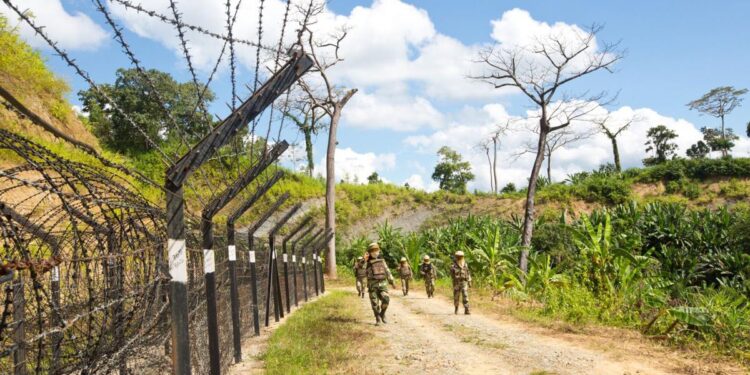Lagatar24 Desk
New Delhi: As US President Donald Trump marked his return to the White House by declaring a national emergency on the southern border and initiating measures to tackle illegal immigration, India grapples with its own, albeit distinct, challenges on the Indo-Bangladesh border. While the US pushes forward with deploying troops and imposing stringent policies, India’s efforts to curb illegal immigration are hindered by geographical constraints, political resistance, and bilateral agreements.
US Acts Decisively, India Faces Resistance
The Trump administration has already deployed 1,500 troops along the US-Mexico border, halted birthright citizenship, and launched deportation drives targeting 11.7 million undocumented immigrants. In contrast, India, which shares a 4,096-kilometre-long porous border with Bangladesh, struggles with an estimated 20 million illegal immigrants.
Border Fencing Hurdles and Resistance From Bangladesh
Efforts by India to secure its borders have been met with significant resistance, both politically and on the ground. A 1975 bilateral agreement restricts construction of “defence structures” within 150 yards of the border, and Bangladesh has often opposed India’s attempts to install barbed-wire and smart fencing.
Recent clashes in Malda and Panchbibi underscore the tension. While India views fencing as essential for national security, Bangladesh perceives it as a violation of agreements. The unfenced 23.35% of the border, particularly in riverine and densely populated areas, remains a hotbed for illegal immigration and smuggling.
The Human and Political Costs
Illegal immigration poses significant challenges for India, particularly in Assam, which shares a 263-kilometre border with Bangladesh. Political instability in Bangladesh, following the ouster of Sheikh Hasina, has exacerbated the issue, with Assam’s Chief Minister Himanta Biswa Sarma reporting a surge in undocumented migrants since August 2024.
Vice President Jagdeep Dhankhar recently warned of the “demographic disruption” caused by unchecked illegal immigration, highlighting its potential to destabilize democracy and threaten national security.
The Scale of the Problem
While the US boasts advanced technology and political will to act against illegal immigration, India’s struggle is compounded by geographical challenges and socio-political dynamics. Despite government estimates, the clandestine nature of illegal immigration makes it nearly impossible to collect accurate data, according to Union Home Secretary Ajay Kumar Bhalla.
Why India Falls Behind
India’s inability to aggressively tackle illegal immigration stems from:
•Geographical constraints: The Indo-Bangladesh border includes rivers, islands, and densely populated villages, making fencing and surveillance difficult.
•Bilateral agreements: The 1975 agreement limits India’s ability to secure the border.
•Local resistance: Smuggling and illegal crossings benefit border communities economically, creating resistance to fencing projects.
•Lack of political will: Successive governments have been unable to prioritize the issue due to political sensitivities.









